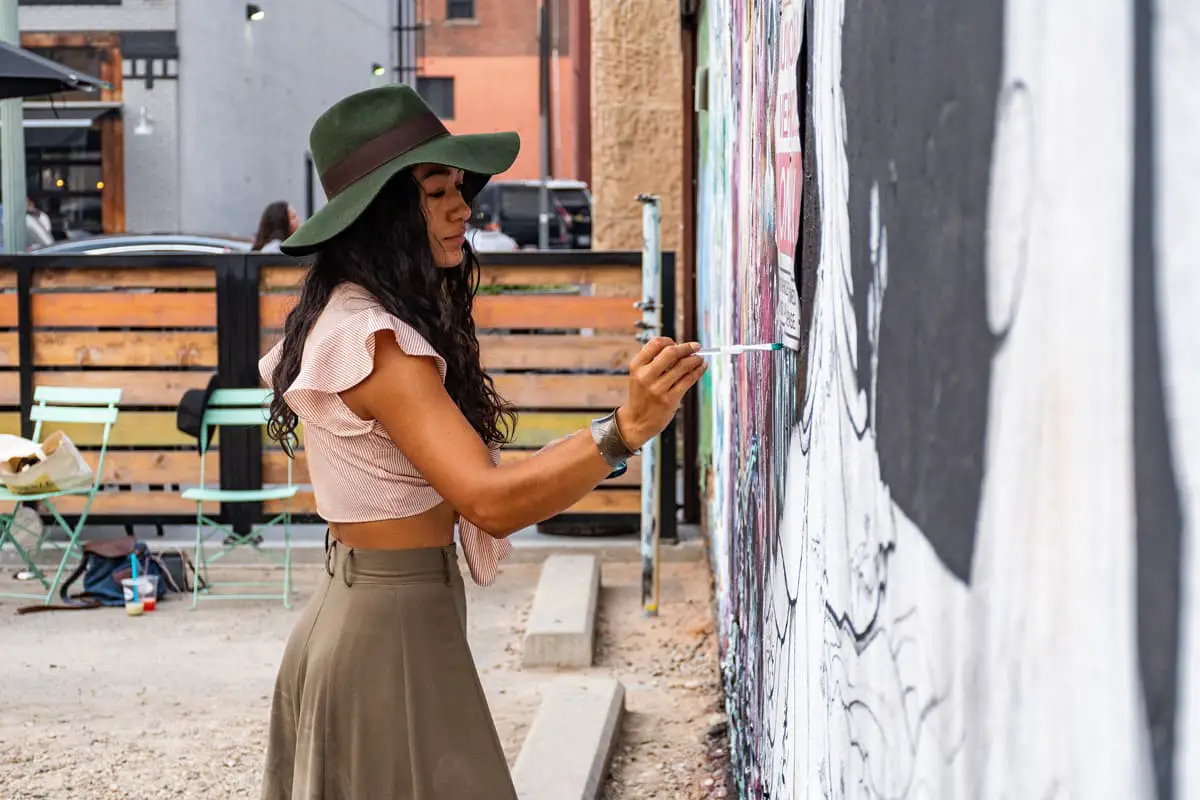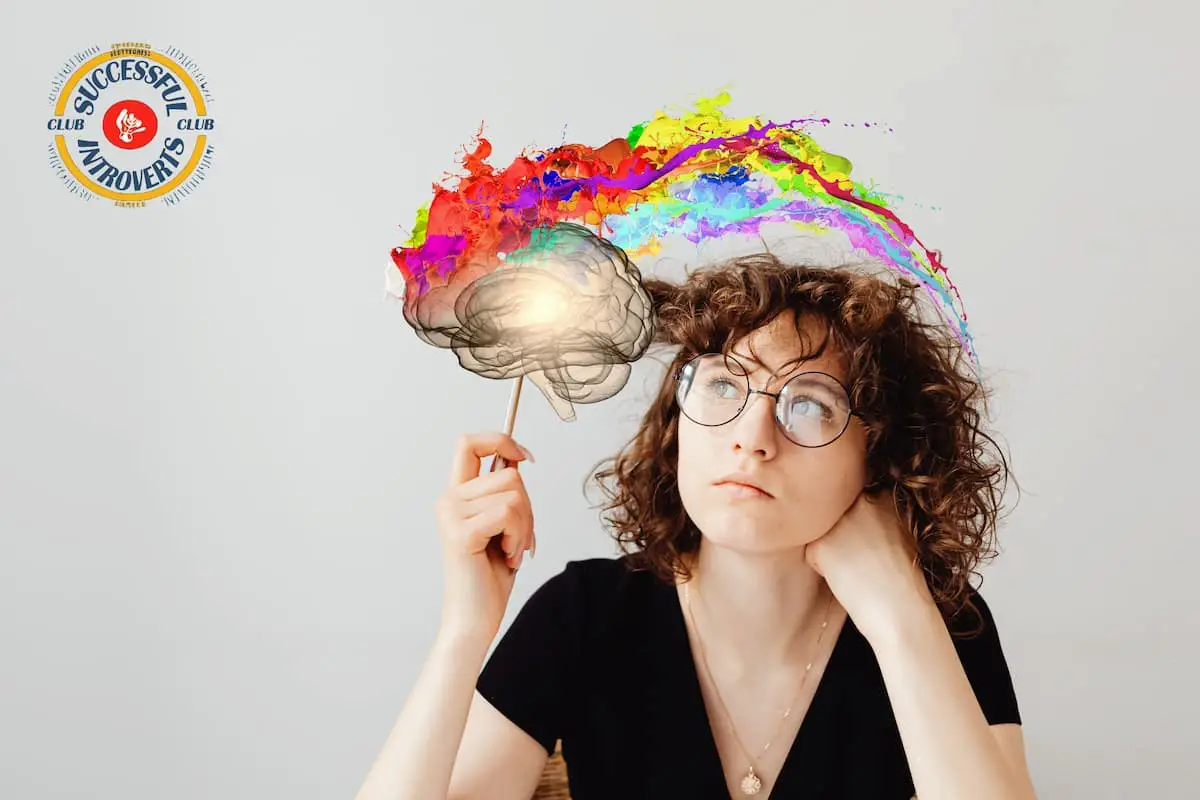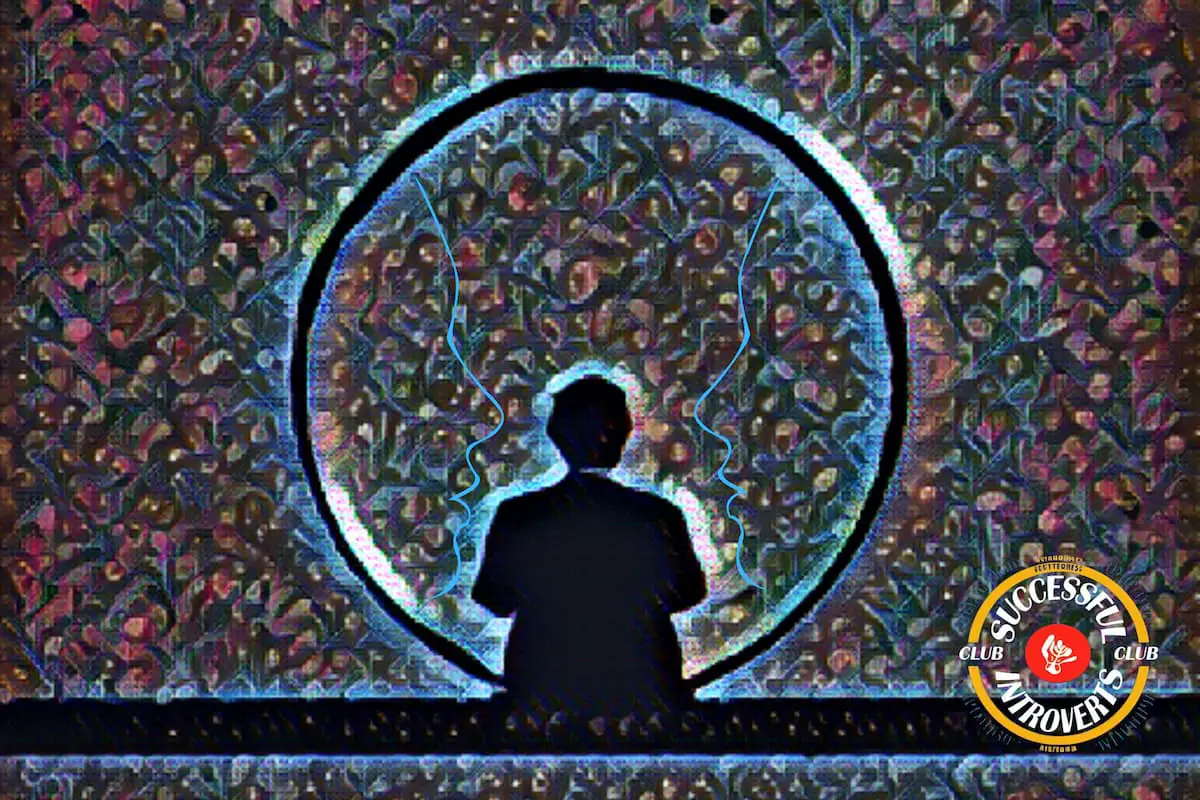If you’re an introvert, you know that feeling lonely is a part of your daily life. That’s right! When you feel lonely, your brain is more open to new ideas and possibilities. But did you know that loneliness can actually make you more creative?
So if you’re looking for ways to be more creative, read on!

What You Will Learn on This Page
Get comfortable with being alone.
The first step to being more creative when you’re feeling lonely is to get comfortable with being alone. This doesn’t mean that you have to like being alone, but it does mean that you need to accept it as a part of your life. Once you get that being alone is part of who you are, finding ways to be creative when you’re alone will be easier.
Take a break from technology and social media.
Unplug for a little while to clear your head. When you’re feeling lonely, it’s easy to turn to technology and social media for a quick fix.
But instead of scrolling through your Facebook feed or checking your email, take a break from technology and spend some time alone. This will allow you to clear your head and focus on being more creative.
Get caught up in a project.
One of the best ways to be more creative when feeling lonely is to get caught up in a project. Whether painting, writing, or gardening, find something you’re passionate about and focus on.
The more you lose yourself in your work, the less lonely you’ll feel. And who knows? You might just create something unique!
Find ways to enjoy your own company.
Once you’ve accepted that being alone is a part of your life, the next step is to find ways to enjoy your own company.
This might mean taking yourself on dates, going for walks by yourself, or reading books in coffee shops. Whatever makes you happy, make sure to do it often!
Understand the science of loneliness
Being alone. It’s an emotion we’ve all felt at one time or another, and it can have both positive and negative effects on our lives. On the one hand, feeling lonely can prompt us to spend more time with family and friends or to reach out and connect with others.
On the other hand, loneliness can lead to isolation, depression, and other mental and physical health problems.
So, what exactly is loneliness? And what makes some people more susceptible to it than others? Let’s take a closer look at the science of loneliness.
Researchers generally agree that there are two types of loneliness: emotional and social. Emotional loneliness is a feeling of being disconnected from others, even when you’re surrounded by people.
On the other hand, social loneliness is a lack of social relationships or contact with others. Situational loneliness is temporary and happens when you are in a new environment or situation (like starting a new job). Chronic loneliness is long-lasting and usually stems from underlying issues like social anxiety or depression.
Most people experience all three types of loneliness at some point. However, some people are more prone to chronic loneliness due to their personality type or life circumstances.
For example, introverts tend to feel more lonely than extroverts because they require less social interaction. And people who live alone or have few close friends are more likely to suffer from chronic loneliness.
There are many ways to combat loneliness, whether temporary or chronic. For starters, try spending more time with friends and family, joining a club or group that aligns with your interests, volunteering, or simply striking up conversations with strangers.
You can also try reaching out online to connect with others who might be going through something similar. Whatever you do, don’t suffer in silence—the first step to overcoming loneliness is acknowledging it and taking action to address it.
Use your loneliness as a source of inspiration.

Once you’ve found ways to enjoy your own company, the next step is to use your loneliness as a source of inspiration. If you’re feeling creatively stuck, try thinking about what made you feel lonely in the first place.
What are some things that you wish you had in your life? What are some things that you wish were different? Use these questions as a jumping-off point for new and exciting ideas!
Use loneliness to your advantage.
There’s nothing wrong with feeling lonely. In fact, some of the most successful and productive people have used their loneliness to their advantage. When you’re by yourself, you can Concentrate more on your work and be more creative.
You’re also more likely to be productive because you don’t have anyone to Distract you from your goals. And although it’s easy to feel like you’re the only one going through tough times, remember that everyone experiences loneliness at some point in their lives.
Use your loneliness as an opportunity to empathize with others and build deeper relationships. By embracing your loneliness, you can turn it into a source of strength.
Being lonely doesn’t have to be a bad thing. Loneliness can be the key to unlocking your creativity with the right mindset! If you’re feeling lonely, use it as an opportunity to get caught up in a project, find ways to enjoy your own company, or use it as a source of inspiration.
How does loneliness affect creativity?
Don’t overthink it – sometimes the best ideas come when you’re not forcing them.
Loneliness can actually be a great source of inspiration for creativity. When you feel lonely, your brain is more open to new ideas and possibilities. So if you’re looking for ways to be more creative, try using your loneliness as a jumping-off point!
One of the best things about being creative is that there are no rules. So don’t be afraid to experiment and try new things. The worst that can happen is that you’ll learn something new in the process!
What are some creative ways to combat loneliness?
There are many ways to combat loneliness, whether temporary or chronic. For starters, try spending more time with friends and family, joining a club or group that aligns with your interests, volunteering, or simply striking up conversations with strangers.
You can also try reaching out online to connect with others who might be going through something similar. Whatever you do, don’t suffer in silence—the first step to overcoming loneliness is acknowledging it and taking action to address it.
Does loneliness help creativity?
It is widely believed that creativity thrives in solitude. Without the pressures and distractions of the outside world, it is easier to focus on the task at hand and explore new ideas. Loneliness can often lead to restlessness, which can be channeled into more productive activities.
Introverts can put more energy into creative thinking and imagination without interacting with others. However, it is essential to note that not all forms of loneliness benefit creativity.
Suppose an individual feels isolated and cut off from the world. In that case, this can lead to feelings of anxiety and depression, which can stifle creativity. Only when loneliness is experienced as a choice can it be harnessed as a tool for creativity.
How can I be creative alone?

- Get in the right state of mind.
The first step to being creative is getting into the right mind. This means getting rid of any negative thoughts or emotions holding you back. If you’re feeling stressed, anxious, or angry, take some time to relax and clear your mind before you start trying to be creative.
- Set some goals
It’s essential to have a clear idea of what you want to achieve before you start trying to be creative. Otherwise, you’ll end up wasting time and not getting anything done. Sit down and list all the things you want to accomplish, then brainstorm ideas for how you can be creative in achieving those goals.
- Take some time for yourself.
One of the best ways to be creative is to take time for yourself. This means disconnecting from the outside world and spending time alone with your thoughts. Turn off your phone, close your laptop, and just focus on being in the moment. Let your mind wander and see where it takes you.
- Experiment with different mediums
If you’re having trouble being creative, try experimenting with different mediums. This could mean trying a new type of art supplies or using another format for your project. For example, try using a mind map instead of traditional linear notes if you’re writing a paper. Or, if you’re painting, try using acrylics instead of watercolors. Just mix things up and see what works best for you.
- Get inspired by others.
One of the best ways to get ideas is to look at other people’s actions. When you see something that someone else has created that you like, ask yourself how you could put your own spin on it or make it even better. This doesn’t mean you should copy someone else’s work; instead, use it as inspiration for your projects.
Why are creative people so lonely?
Being creative can be a lonely pursuit. Even though you may create something that many people enjoy, the act of creation is often a solo endeavor. And while there are plenty of benefits that come with being creative. Such as increased productivity and satisfaction. There are also some drawbacks, including isolation and loneliness.
The feeling of loneliness is often compounded by the fact that creative people can be introverts. This means they tend to draw their energy from within themselves rather than from external sources. And while plenty of introverts can find fulfillment in their work, introverted creatives often have a hard time because their job requires them to interact with others.
For example, a writer may enjoy creating a story. Still, he or she may not enjoy promoting the novel to publishers or readers. Similarly, an artist may enjoy the process of creating a painting. Still, she or he may not enjoy the process of trying to sell the image to galleries or collectors.
It can still be difficult for creative introverts to find the motivation to pursue their work. And while there are plenty of ways to overcome these challenges, such as hiring a publicist or joining an artist’s colony.
Being creative can be a lonely pursuit, but it doesn’t have to be.
There are plenty of ways for introverted creatives to overcome challenges by seeking out supportive communities and networks, pursuing external validation through awards and accolades, and investing in self-promotion. Introverted creatives can find fulfillment in their work while enjoying the benefits of being creative.
Find creative people to connect with online or in person and learn from their experiences.
Being creative doesn’t mean you have to go it alone. In fact, one of the best ways to overcome the challenges of being an introverted creative is to seek out supportive communities and networks.
There are plenty of online communities that can provide support and advice for introverted creatives. For example, The Successful Introverts’ Club is a website dedicated to helping introverts thrive in their creative pursuits.
Similarly, our Facebook group offers advice and resources for creative professionals. And while these websites can be helpful, there’s nothing like connecting with people in person.
If you’re looking for in-person support, consider attending meetups or workshops designed for introverted creatives. These events can provide valuable opportunities to network with like-minded people and learn from more experienced creatives.
Be patient – the more you practice being creative, the better you’ll become at it.
Creativity is often seen as a talent that only a few people are born with. However, the truth is that creativity is a skill that can be learned by anyone. The more you practice being creative, the better you will become at it. Like any other skill, practicing regularly is key to becoming more creative.
That doesn’t mean you have to be working on some grand creative project all the time. Even simple activities like doodling or brainstorming can help to increase your creativity.
So if you want to become more creative, don’t be afraid to put in the hard work. The more you practice, the better you will become.
Like any skill, being creative takes time and practice. And while there’s no guarantee that you’ll become a world-renowned artist or writer overnight, the more you create, the better you’ll become at it.
Seek out supportive communities, practice your craft, and be patient. With time and effort, you’ll develop your creativity and find fulfillment in your work. So if you’re feeling lonely and creatively lost, don’t give up.
Conclusion:
Creative people are often lonely because they see the world differently than most people. They’re not afraid to be themselves and stand out from the crowd. The loneliness will dissipate if you can learn to accept and love yourself for who you are.
And once you find your creative groove, don’t be surprised if the loneliness starts to disappear altogether. In fact, it might even become one of your most significant assets.
Loneliness doesn’t have to be a bad thing! In fact, it can actually be a source of creativity and inspiration. If you’re an introvert, use these tips to learn how to be more creative when feeling lonely.
Remember, the first step is to get comfortable with being alone. Once you’ve done that, the rest will come easy!
We hope you found value in this article. If you’re looking for more ways to embrace your weirdness and find success, we have just the thing for you. Grab our free ebook, Embrace Your Weirdness, and learn how to use your unique traits to achieve anything you want in life. Thanks for reading!
